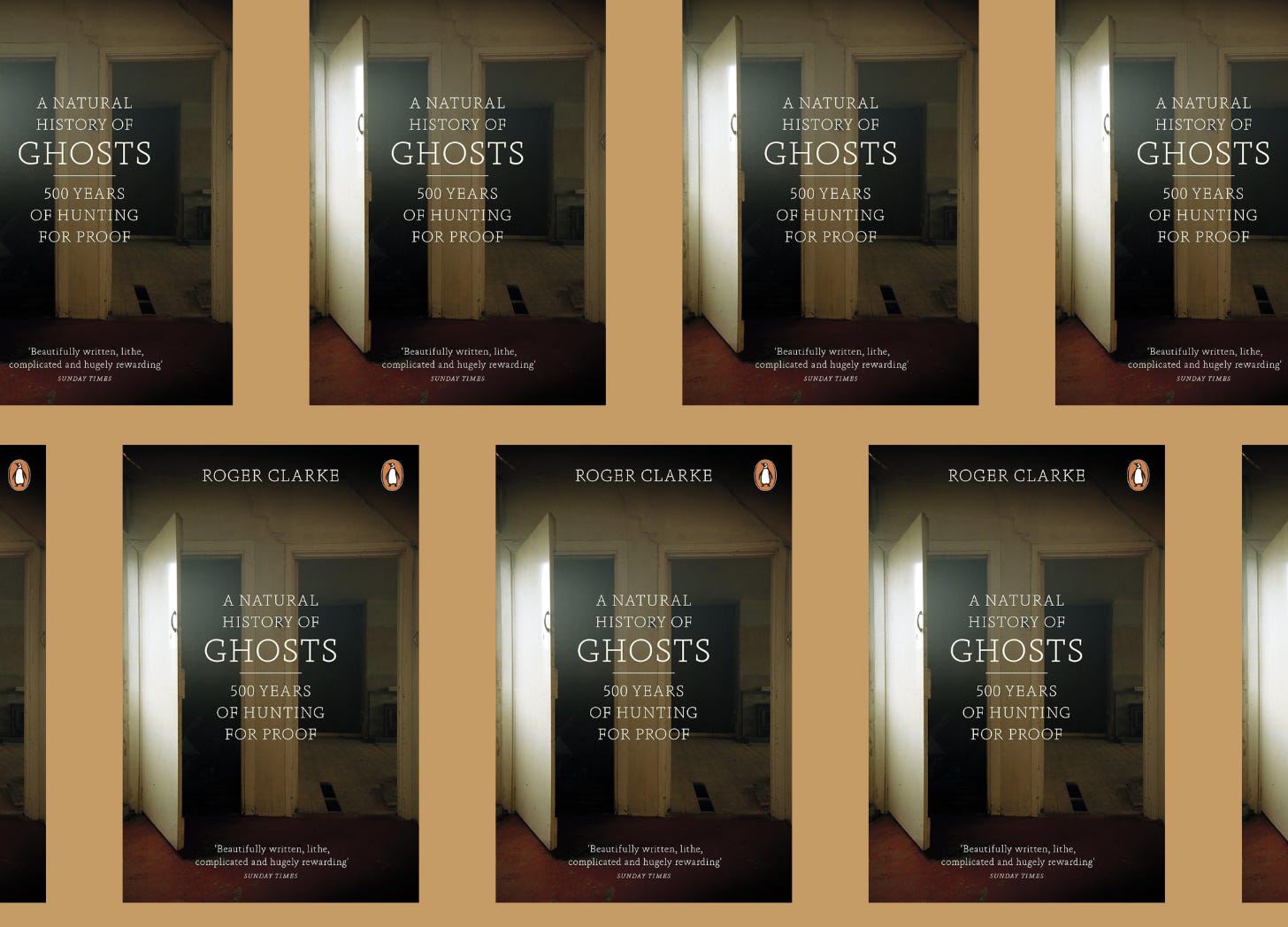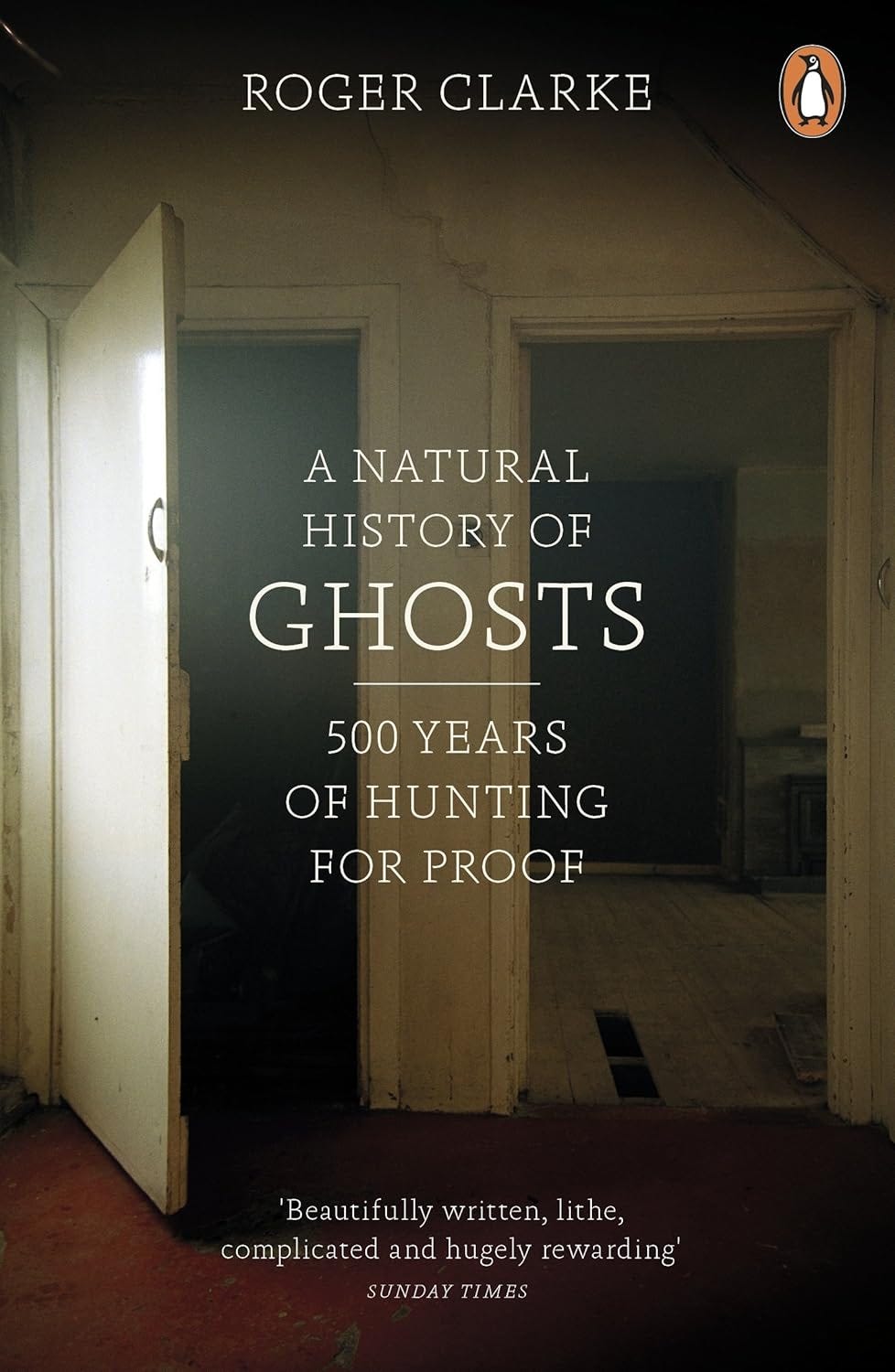Roger Clarke’s A Natural History of Ghosts: 500 Years of Hunting for Proof is one of those books that doesn’t quite fit into a neat category. It’s not a debunking manual or a believer’s manifesto, and it’s not trying to be a pop-science explanation of ghosts either. It’s essentially a long wander through five centuries of people seeing, reporting, arguing about, and profiteering from ghosts.
Clarke writes as someone who has been quietly obsessed with ghosts since childhood, and that’s very obvious in the tone. The book opens with personal memories of the haunted house he grew up in and his early brush with the Society for Psychical Research. That thread of slightly geeky enthusiasm runs right through. He clearly loves this material, and he’s good at telling a story: each chapter feels like being sat down and told, “Right, let me tell you about this haunting.”
The structure is loosely chronological but also a bit taxonomic. Rather than simply marching through the centuries, Clarke groups hauntings by type and cultural moment. We get the famous poltergeists, the Victorian apparitions, the noisy mediums, the frauds, the almost-certainly-frauds, and the cases that never really resolve one way or another. Classic stories like the Cock Lane ghost, Borley Rectory, and Hinton Ampner all make an appearance, often with more historical detail than you usually see in TV documentaries or popular ghost books.
What I liked most is that in A Natural History of Ghosts, Clarke is really writing about people more than he’s writing about ghosts. Mediums, clergy, magicians, aristocrats, servants, grieving parents, bored journalists – everyone is in here. You get a strong sense of how ghosts change shape depending on who is telling the story and what they need from it. Sometimes they’re weapons in religious arguments, sometimes tools of social control or ways of talking about grief, and sometimes they’re just good theatre.
Clarke also has an eye for how class and respectability shape haunting narratives. A maid reporting a ghost in a country house gets handled very differently to the vicar seeing something, or the local squire having a strange experience. The book is at its best when it’s quietly pointing this out and letting you join the dots - who gets believed, who gets dismissed, and who manages to turn a haunting into a career.
One thing worth saying, especially if you’re coming to this from a more skeptical angle, is that Clarke doesn’t really set out to solve anything. There are nods towards fraud, misperception, and suggestion, and he’s not credulous, but he’s also not interested in spending chapters on psychology experiments or brain science. He’s a historian and storyteller first and if you want a tour through the cultural history of ghosts, this is a wonderful read.
Each chapter is essentially a mini-case study and I enjoyed being along for the ride, but readers who prefer a very tight, thesis-driven structure might get a bit impatient. For me, though, this was part of its charm. Clarke isn’t trying to cover everything; he’s trying to show how certain hauntings and ideas about ghosts evolved, got recycled, and still echo in the way we talk about haunted houses today. If you’ve watched a lot of paranormal TV or read older ghost literature, you’ll recognise the bones of a lot of modern stories in here.
Ultimately, A Natural History of Ghosts is delightful. I have bought three copies as mine get borrowed. Readers of this blog are sure to enjoy this book.
Enjoy this? You can get more articles via my newsletter, The Ghost Geek, or support my work with a one-off tip on Buy Me a Coffee. Purchases made via links in this review may earn me a small commission through Amazon Affiliates at no extra cost to you.




